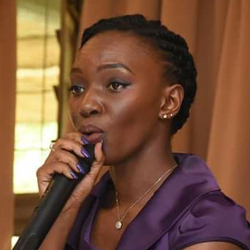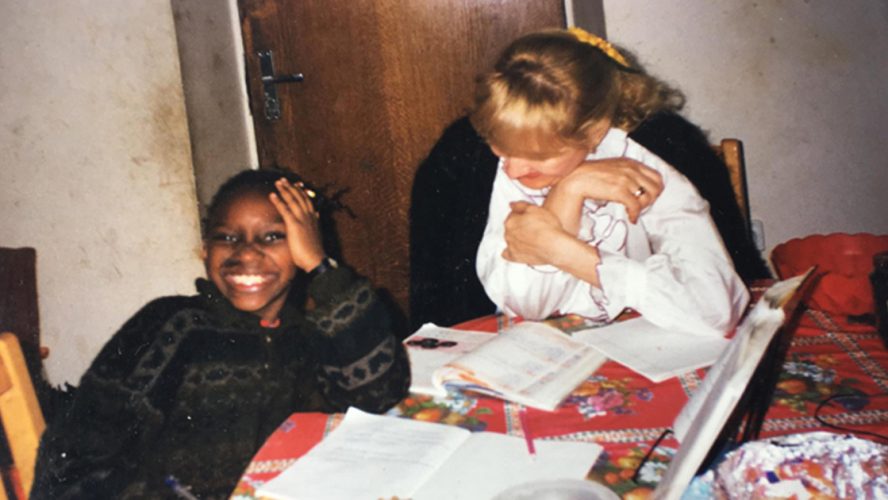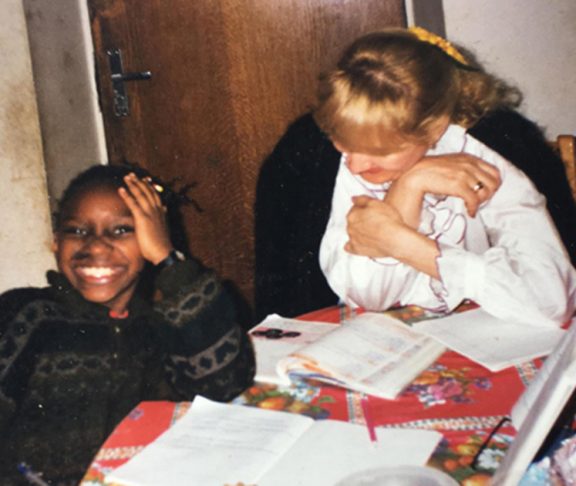
Nina Mago
Epilepsy Advocate, Uganda
When Nina Mago was a toddler, she would sometimes run to one of her parents and hug them tightly around the legs. They assumed she was frightened or just being affectionate, but in hindsight, it’s likely that Nina was having a seizure and needed something to hold onto.
At first, doctors in Uganda told Anita that the birthmark on Nina’s face was the problem: They said it was affecting her brain. “Not understanding what your child is suffering from is very stressful,” said her mother, Anita. “It caused a lot of anxiety.”
When Nina was six years old, the family moved to Moscow for her father’s job. There, she was diagnosed with epilepsy. She was taking medicine, but still having seizures; however, her teachers and fellow students understood and accepted her condition. They took care of her.
My friends in Moscow made me feel normal
Her best friend tried to visit whenever Nina had a seizure in school and ended up in a cot in the nurse’s office. “If I was still asleep when she came, she would put her watch on my wrist so that I would know she’d been there,” Nina said.
Even though Nina really didn’t understand what happened when she had a seizure, she had friends and felt like a normal kid.
In Uganda, some people thought I was possessed
Seven years later, when the family returned to Uganda, Nina lost her support system. She was bullied because of her epilepsy and forced to change schools multiple times. Teachers were afraid of her, too.
In Uganda, epilepsy is considered to have supernatural causes. It’s said to be the result of a curse on the family, or a demonic possession.
There’s also a widespread belief that epilepsy is contagious, so people may drown or receive third-degree burns while having a seizure because bystanders refuse to touch them.
Nina shared her memories with the Epilepsy Foundation of America: “I would wake up [at school] on a dusty floor, wounded and disoriented, while children made a spectacle of me through the window.
Not being able to run to someone older for safety and not waking up in the comfort of my teacher marked the beginning of a very scary new world; one that I was not ready for at the time.
I was constantly bullied and always made fun of, always! The terror of exposure keeps one burdened by secrecy. It brings you face to face with loneliness, discrimination, and stigmatisation, and drowns you in depression.”
I became the role model that I needed as a child
Despite the bullying, Nina made it through school and earned a college degree in 2011. She’s now seizure-free.
Nina and her mother started the Purple Bench Initiative, a nonprofit that supports people with epilepsy and their caregivers, and does outreach to schools, colleges and Rotary clubs.
The group has a presence on Facebook and Twitter, sharing information about epilepsy and encouraging people to share their stories.
“I kept waiting to meet someone who was speaking out about epilepsy and talking about what it is, offering hope to people,” Nina said. “That did not happen – so I decided to be that person.”


